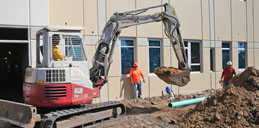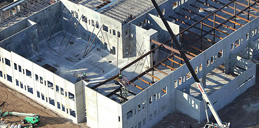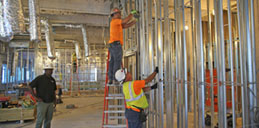5 Tips for Lighting a Modern Workspace
Lights are more than a primary means for illuminating a space. The type of lighting and the levels of artificial versus natural lighting in an environment can impact the health and productivity of employees. Several research studies have shown that office lighting affects workers physiologically. Most notably, an online survey of more than 7,000 employees conducted by Staples in the United Kingdom discovered that 80% of respondents reported that having proper lighting was essential to them. Here are five tips for lighting a modern workspace that can also improve productivity and profitability.
Replace fluorescent lights
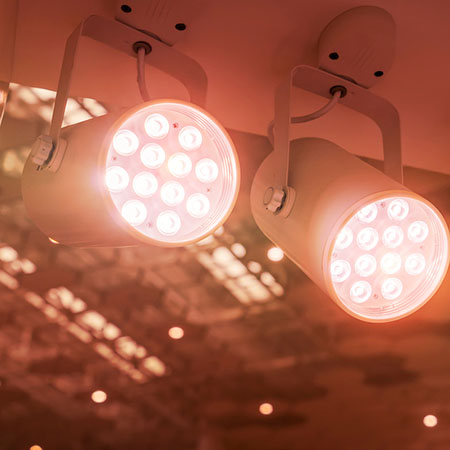 LED (light emitting diode) lights are an ideal replacement for fluorescent or CFL bulbs. Many offices are switching to LEDs because they use less energy compared to fluorescent tubes and other incandescent bulbs. They also last longer, emit less heat and require significantly less energy to operate. For instance, a 14-watt LED bulb is equivalent to a 75-watt incandescent bulb. Since LED fixtures do not contain mercury or gases, they are a safer choice for the environment too.
LED (light emitting diode) lights are an ideal replacement for fluorescent or CFL bulbs. Many offices are switching to LEDs because they use less energy compared to fluorescent tubes and other incandescent bulbs. They also last longer, emit less heat and require significantly less energy to operate. For instance, a 14-watt LED bulb is equivalent to a 75-watt incandescent bulb. Since LED fixtures do not contain mercury or gases, they are a safer choice for the environment too.
Bring in natural lighting
Natural lighting can make your office brighter and more appealing. Several studies also show that natural light in an office environment can increase sales and productivity by up to 35% and creativity by 20%. Employees who have natural light in their working environment also tend to exercise more, sleep longer, and feel healthier compared to those exposed mostly to artificial lighting.
Install lighting controls
Installing lighting control systems in your office will not only save energy but ensure adequate levels of lighting in the office. Sensors automatically turn lights off when the workspace is not in use to save energy. There are also daylight harvesting controls that can be installed that automatically adjust the office lighting depending on the available natural lighting to maintain an optimum level of lighting in the office throughout the day. Lighting controls can also help prevent fatigue and help employees stay productive.
Maximize lighting efficiency
Each area throughout the office needs a different type of lighting to depending on the needs and requirements of workers and visitors. For example, lighting an open floor plan with dozens of workstations has different lighting requirements than a private office, for example. Consider the lighting requirements for the restroom, break room, conference room, reception desk and other areas of the office space to maximize lighting efficiency and reduce energy waste.
Incorporate indirect lighting
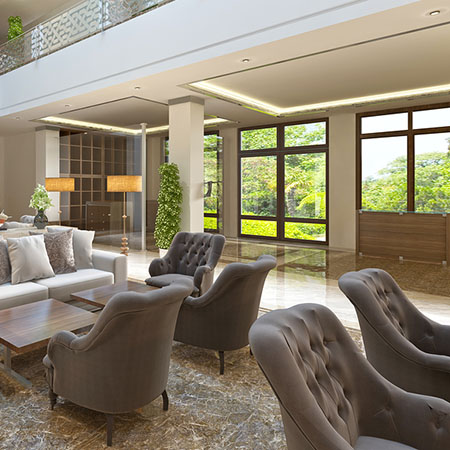 Bright overhead light fixtures can be distracting in an office space, especially when employees spend most of the day working on computers. The overhead lighting can cause a glare that leads to eye strain, headaches, and worker fatigue. Consider using attractive stand-alone LED lamps that provide an ample source of indirect lighting at each workstation.
Bright overhead light fixtures can be distracting in an office space, especially when employees spend most of the day working on computers. The overhead lighting can cause a glare that leads to eye strain, headaches, and worker fatigue. Consider using attractive stand-alone LED lamps that provide an ample source of indirect lighting at each workstation.
Are you considering a fresh new look for your office space? Our interior design professionals can give you expert advice for a turn-key renovation that will help you maximize employee performance while minimizing energy costs.



